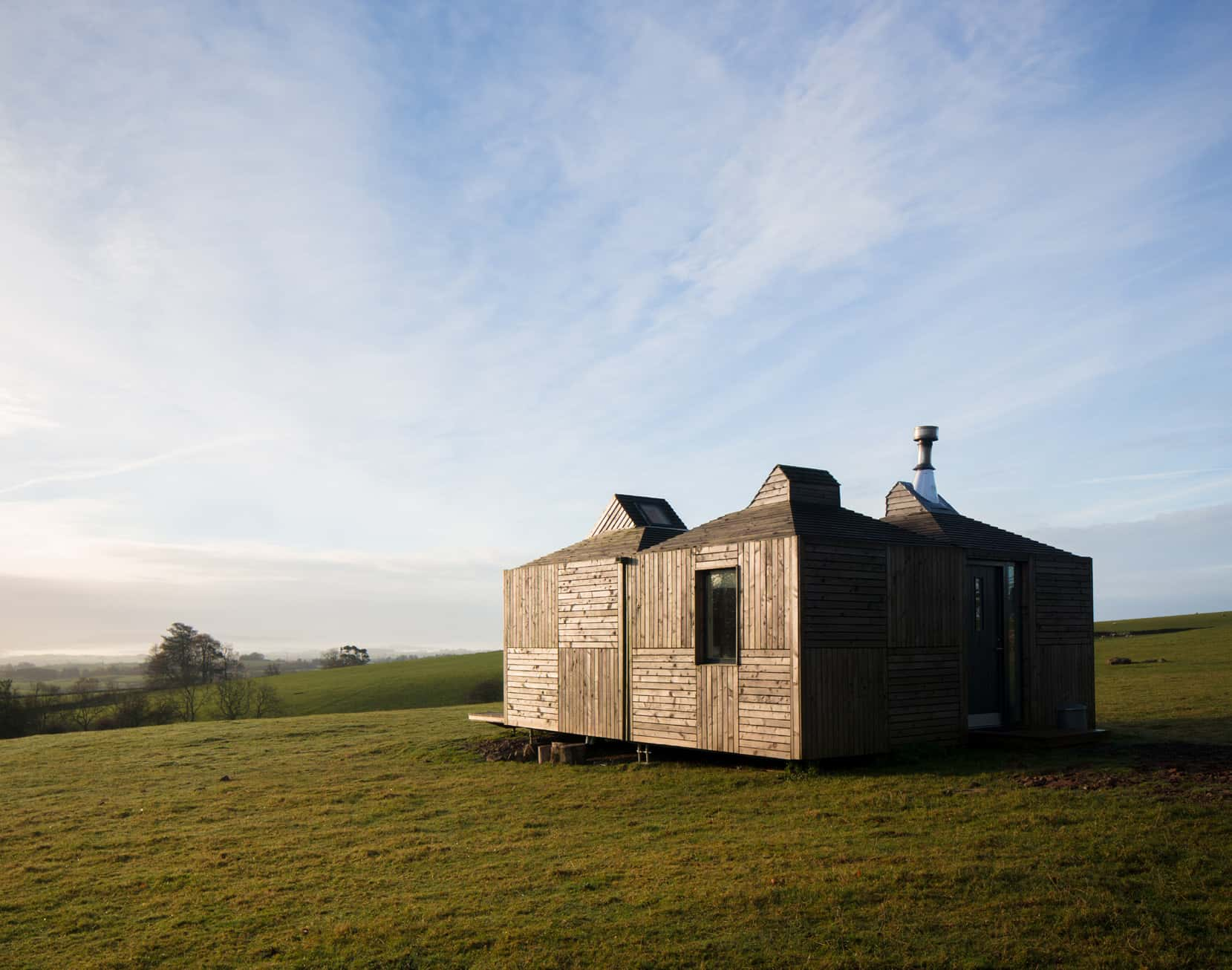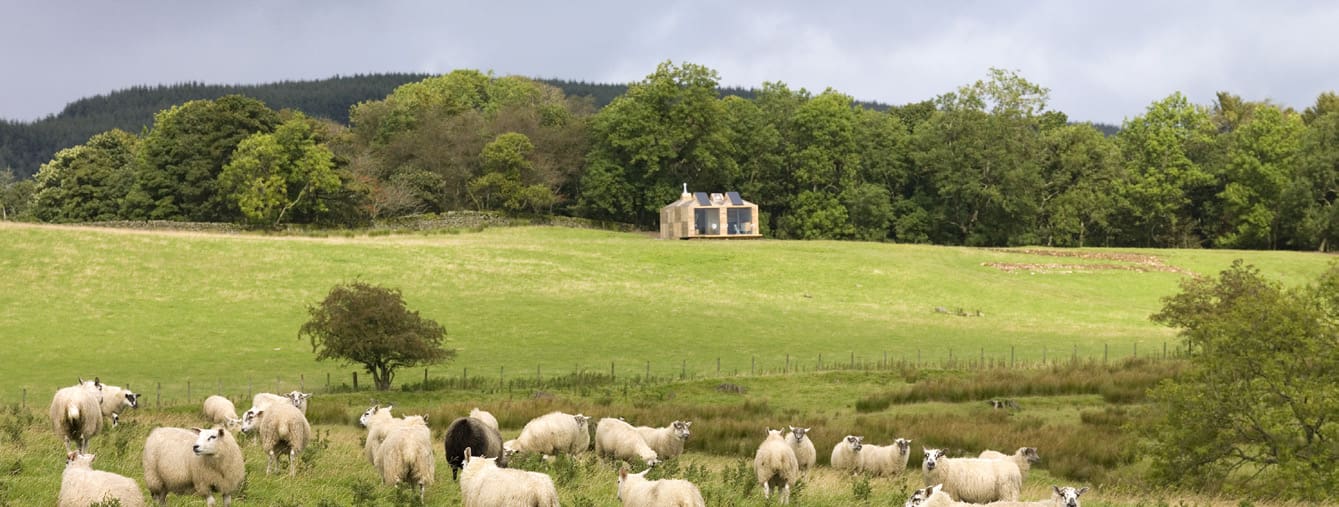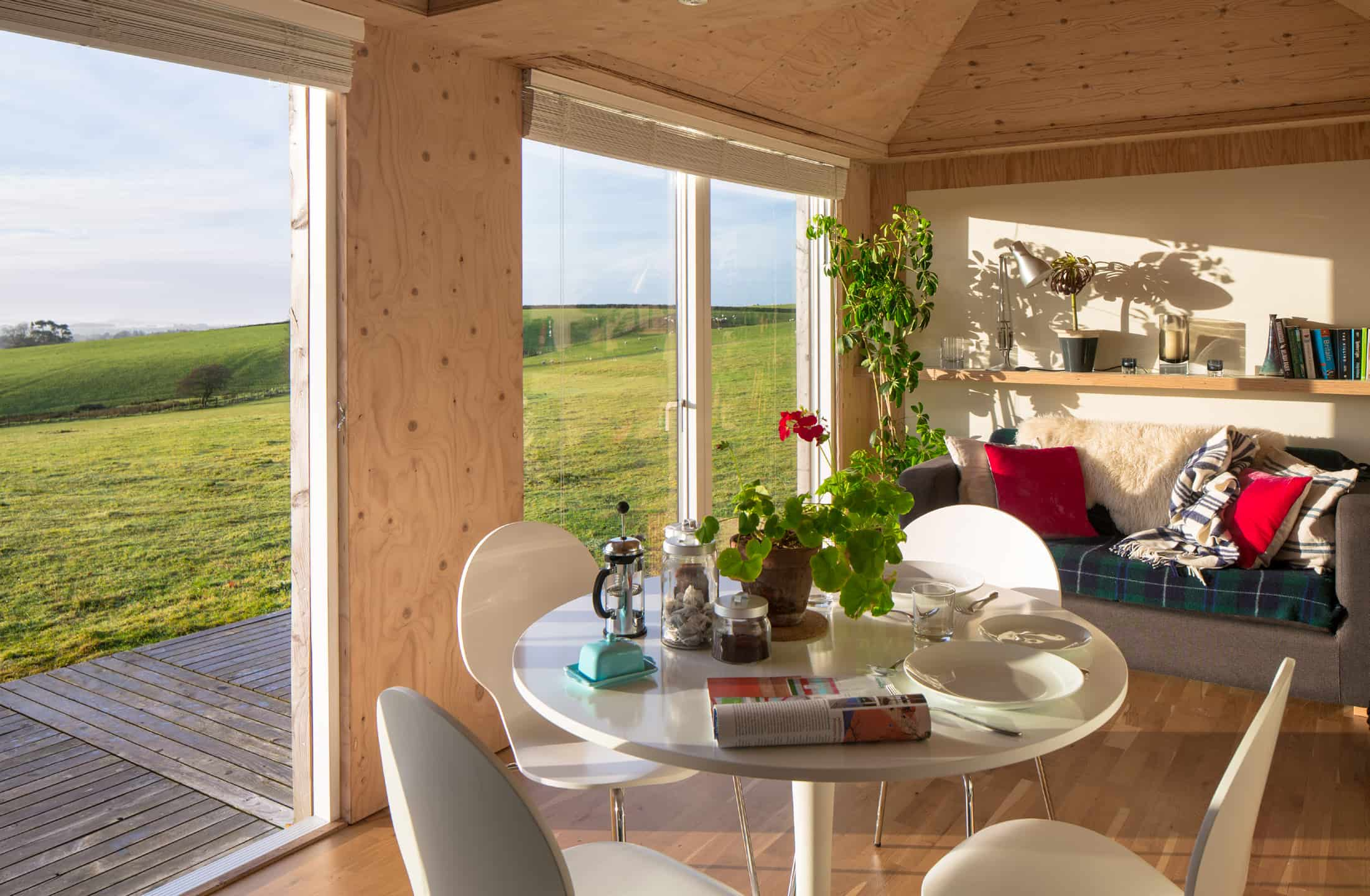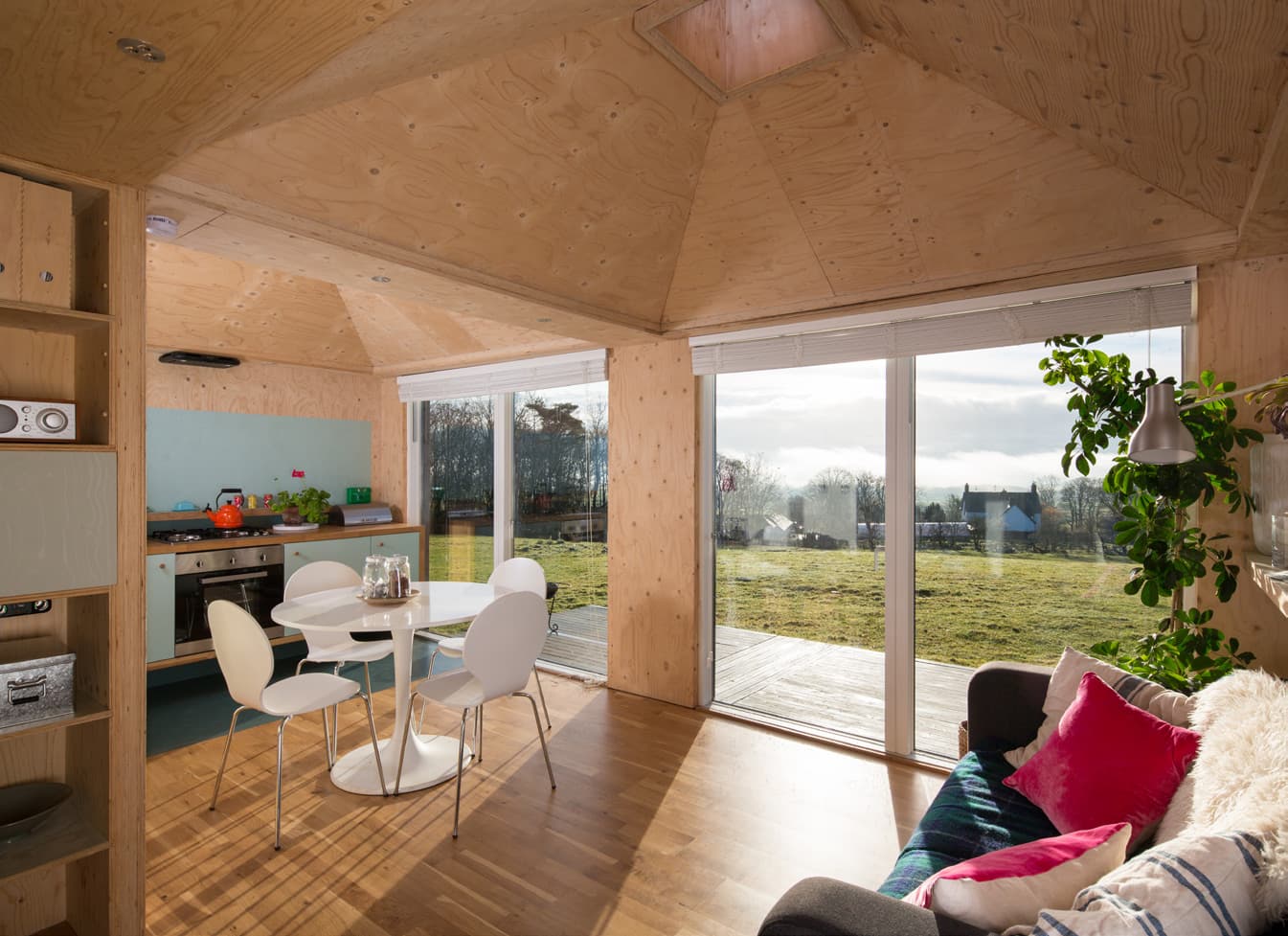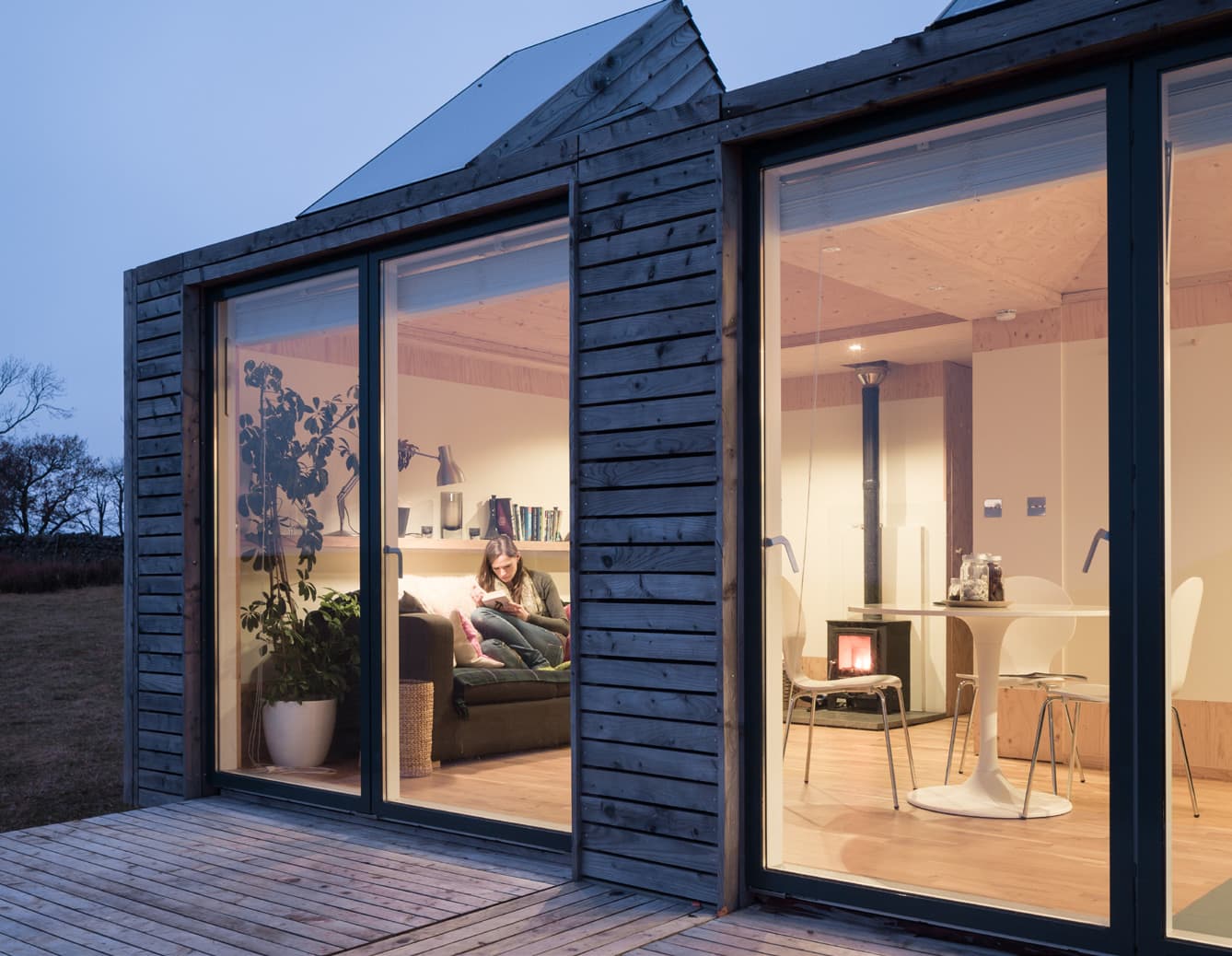Brockloch Bothy is comprised of four modular ‘pods’, each with its own pyramid roof and roof light. The off-grid building is rented out as a holiday throughout the year. The four ‘pods’ are linked together but the building is modelled internally to create both open-plan spaces and separate rooms. Panels of soft colour on the spruce walls articulate the space.
An entrance hall opens onto the light-filled, open-plan living space. The wood burner sits on a slate hearth at the opposite end of the living area. Light floods into the entire space through the large south-facing windows and easy access to the decking allows for indoor-outdoor living.
The double bedroom is simply decorated. A painted panel and shelf with bedside reading lights create a focus for the room. Shelving and a small alcove with wooden pegs provide storage and clothes hanging space. A window looks out to the woods and the morning sun. Opposite the bedroom is a compact, but brightly lit, shower room with a wall mirror, long opaque window and coloured rubber flooring.
The window positioning in the bothy has been carefully considered, with large, south-facing, sliding doors to maximise the daylight and solar gain and frame the wonderful views. The four skylights, which illuminate the pyramid ceilings by day, include one above the bedroom. This frames the Galloway Dark Sky and creates the opportunity for stargazing by night.
Brockloch Bothy is one in a series of eco pod projects where duplication of the standard module of the ‘pod’ allows the client a flexibility of design and a configuration to best suit the site.
Timber features
The exterior of the bothy is clad in panels of horizontal and vertical larch. Scottish larch is a naturally durable timber and ideal for external cladding purposes due to the resin and extracts in the wood.
Pale spruce cross-laminated timber panels comprise the structure lining the building’s interiors and the natural wood grain finish brings the outdoors in.
Solid timber oak flooring and hand-built kitchen cabinets with oiled oak worktops complete a mellow timber palette. Panels of breathable, organic clay paint in soft, cool colours, complement the warmth of the wood and help to articulate the space.
Additional features
The walls, floor and roof of the bothy are filled with thick layers of sheep wool insulation for a comfortable interior environment throughout the year. Wool fibres are hygroscopic by nature. They can absorb up to 35% of their own weight from the surrounding atmosphere depending on the humidity. This helps to preserve the surrounding timbers.
While absorbing this moisture, wool releases energy in the form of heat, thus raising the temperature of its surrounding areas. Naturally releasing this moisture in the warmer seasons, wool creates a cooling effect on the same surroundings.
The off-grid building is solar powered and uses 12V 3W LED surface-mounted lights to compliment the simplicity of the spaces. 12V sockets are fitted to charge mobile phones, tablets and laptops. Bottled gas is used for cooking. The wood burning stove also provides extra heat for use throughout the year.
The building is fitted with high performance windows and sliding, patio and entrance doors. The window frame section, with a combination of external aluminium and internal timber finishes, complements the building’s minimal aesthetic.
A library of sustainable building materials
Our website includes a web-based resource that showcases sustainable, traditional, innovative, recycled and low carbon building materials. If you are looking for inspiration or information on different types of materials to consider for your project, visit our materials library.

